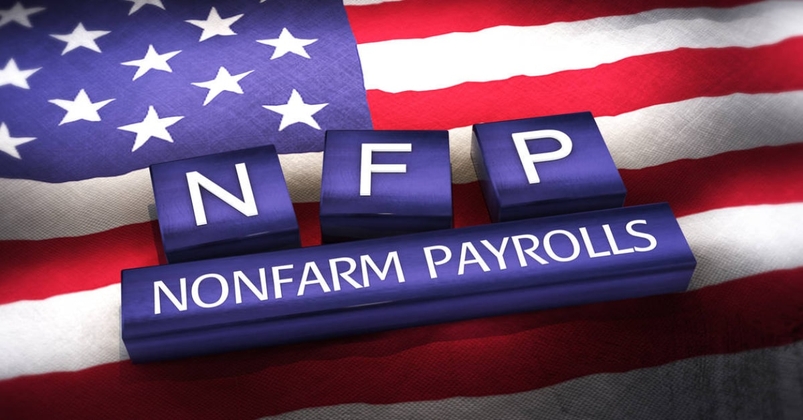CFDs are complex instruments and come with a high risk of losing money rapidly due to leverage. 72.2% of retail investor accounts lose money when trading CFDs with this provider. You should consider whether you understand how CFDs work and whether you can afford to take the high risk of losing your money.
- English
- Italiano
- Español
- Français
Macro Trader: Short-, Medium-, And Long-Run Thoughts On The FOMC Outlook

I’ll publish a full preview for the September FOMC meeting a little later on in the week. In the meantime, a collection of thoughts on the Fed’s short-, and longer-run, outlook:
- The August jobs report was, in an ideal world, meant to resolve the ‘25bp vs. 50bp’ debate over the September decision. Instead, the Fed’s hawks can point to a drop in unemployment, to 4.2%, and a doubling in the pace of earnings growth, to 0.4% MoM, as reasons to begin normalisation with a ‘run of the mill’ 25bp cut. On the other hand, the doves can point to a slowing in headline job growth, with the 12-month average of job gains now under 200k for the first time in three years, as reason to instead plump for a ‘jumbo’ 50bp cut.
- Pending a potential surprise in the August CPI report, a 25bp cut seems like the most likely outcome at this stage – data suggests a gradually normalising, not a crumbling, labour market, and it would be sensible for policy to also normalise in a ‘slow and steady’ manner.
- This creates an interesting dynamic where, it appears, market participants desire a greater degree of short-term policy easing than the Fed are likely to deliver. Where participants wish policymakers would ‘get on with it’ in returning rates to neutral, those policymakers seem likely to plot a more careful path. That mixture, for now, is a rather dismal one for sentiment, and could create some short-term headwinds for equities.
- Over the medium-term, however, what the Fed do at their next meeting doesn’t matter especially much.
- As with the entirety of 2024, so far, the most important factor for global equities, and sentiment more broadly, has not been what the Fed will do next, but what they can do next. Here, policymakers still have >500bp of room to cut rates, were the economy, or financial conditions, to require it. This is the essence of the ‘Fed put’.
- This ‘put’, of course, has become stronger of late, since Chair Powell’s remarks at Jackson Hole, whereby Powell clearly stated that policymakers “seek or welcome” a further cooling in labour market conditions. Clearly, a forceful policy response would be delivered were the labour market to soften further, with such a response likely acting as a backstop for equities were it to be required. Knowledge of this ‘put’ should underpin investor confidence to remain further out the risk curve, and keep dips relatively shallow in nature.
- Looking even further ahead, into next year, the USD OIS curve currently discounts 227bp (i.e., 9 cuts) by July 2025. Although I think near-term pricing is too aggressive, I find it easier to envisage an environment where this rapid degree of rate cuts were to be delivered, particularly from the present starting point, where the fed funds rate resides 200bp above neutral
- Though the election complicates matters, and a cut larger than 25bp to kick-off the normalisation process would smack of panic, cutting in larger clips could well be warranted later this year/early next, particularly if the current combination of solid growth + gradually falling inflation + slowly rising unemployment continues to hold true. The ‘why wait?’ question becomes an easier one to answer the more inflation fades, and the more confidence that policymakers obtain in a sustainable return to the 2% inflation target
- The other factor to consider, here, is quantiatitve tightening. At the current pace of balance sheet run-off, the balance sheet looks set to return to its July 2020 level by the end of the year – we may as well now call this neutral, since the covid-era QE will likely never be entirely unwound (nor will the GFC-era purchases, by the way), effectively monetising $7tln of US government debt. A 25bp cut coupled with another QT taper, or even the end of QT entirely, would probably have the same macro impact as a 50bp move, albeit without the potential to cause a similar degree of market panic.
- To sum up – markets want a 50bp cut, asap, but are unlikely to get it; nevertheless, the ‘Fed put’ remains firmly intact, and has actually grown more forceful throughout the year; faster, deeper, cuts could well come to fruition however, in the longer-run, if data gives the Fed confidence to get to neutral sooner rather than later; hence, short-term headwinds for sentiment could well emerge, amid consternation over the September meeting, though the longer-run ‘path of least resistance’ continues to point to the upside.
Related articles
The material provided here has not been prepared in accordance with legal requirements designed to promote the independence of investment research and as such is considered to be a marketing communication. Whilst it is not subject to any prohibition on dealing ahead of the dissemination of investment research we will not seek to take any advantage before providing it to our clients.
Pepperstone doesn’t represent that the material provided here is accurate, current or complete, and therefore shouldn’t be relied upon as such. The information, whether from a third party or not, isn’t to be considered as a recommendation; or an offer to buy or sell; or the solicitation of an offer to buy or sell any security, financial product or instrument; or to participate in any particular trading strategy. It does not take into account readers’ financial situation or investment objectives. We advise any readers of this content to seek their own advice. Without the approval of Pepperstone, reproduction or redistribution of this information isn’t permitted.

